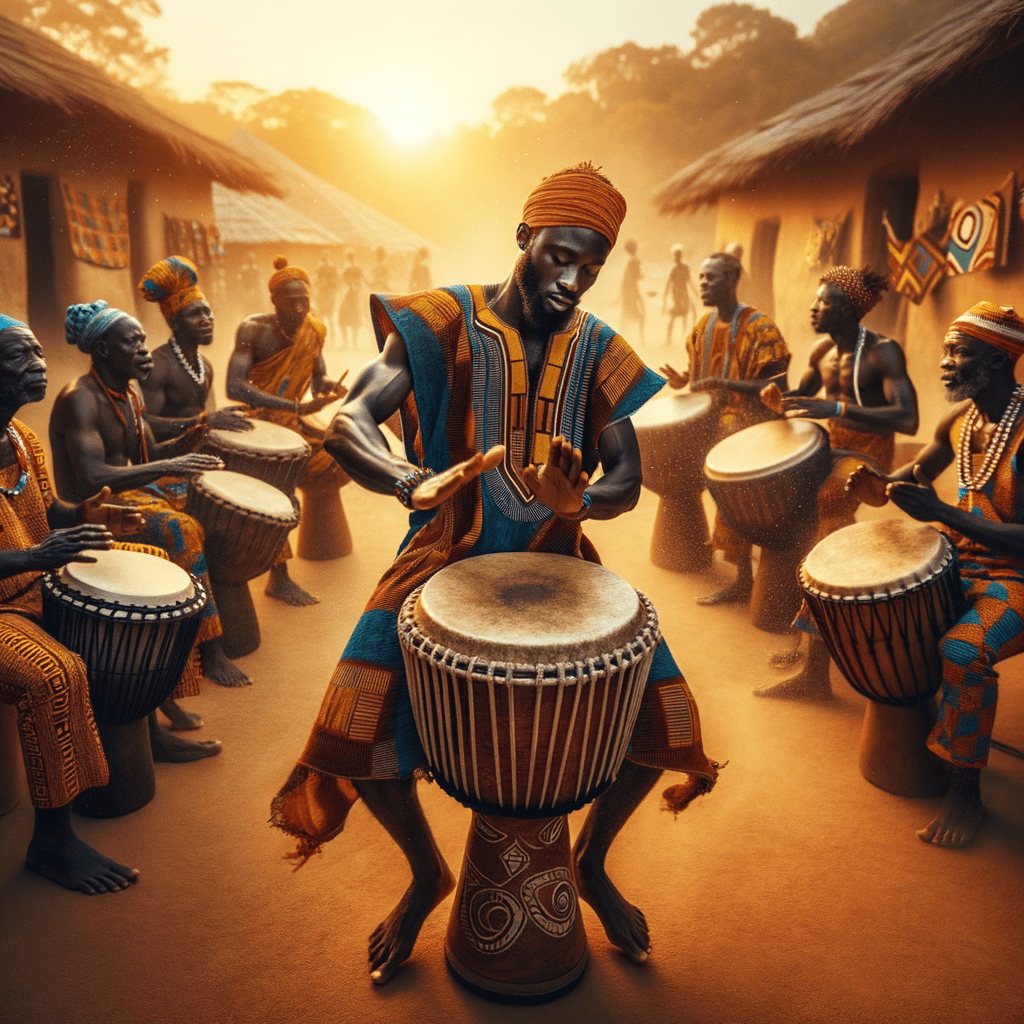Feeling the Rhythm on the Riverbank
Oh, where do I even begin? There I was, just plunked down on the banks of the Niger River, the sun setting in a glorious splash of colors. The sluggish, muddy waters seemed to dance, catching bits of light here and there, mirroring the rhythm of the world around me. Suddenly, there I was, feeling a pulse—an energy—that I hadn’t quite felt before. That’s where I stumbled upon the mesmerizing drumming traditions of West Africa. Like, really felt them for the first time. It was like tapping into a spiritual frequency that vibrated through the stick, the skin, and well, an unsuspecting soul like mine.
But hey, don’t get me wrong, I’m no expert here. I’ve never truly banged a drum with any real skill. Oh, my fingers would likely perform an awkward dance all over it, tripping over one another for sure. What I’m sharing here are raw impressions, emotions that have bubbled over during introspective moments, just like the river does—calm one moment, chaotic the next. Let’s see where these swirling currents take us.
Connecting Through Tradition
The moment you step into a village where drumming oozes through everyday life, you feel something—a truth. It feels like the land is alive, whispering its secrets and stories through each beat that reverberates underfoot. It’s both humbling and awe-inspiring, like standing in front of a storyteller whose tales wrap around you, too old to be captured by books and yet vital in their every beat and pause.
Each rhythm is like a heartbeat telling a story as old as time itself, connecting the community and echoing its identity, passion, and collective memory. It’s not just music. It is a dialogue, a poignant language, and an embrace that means you are part of something much bigger than just you. For a weary traveler like me, caught in the whirlwind of the world, it was grounding.
These drums possess this intriguing role. They are teachers, historians, storytellers, and spiritual guides wrapped into one unassuming yet profound form of expression. It’s like having the chance to interrogate a wise elder—not with words but with the thundering booms and light, skittish taps of the drum, a dialogue unlike any other.
The Language of the Drum
Yes, I know how that sounds: drums talking. But I swear, they do. Not with words like we know them, but with sounds that tell tales and invite understanding. There’s this magical thing called the “talking drum,” you see, and standing there, letting that language freeze you in place, you won’t help but hear it too.
It’s wild. By pressing the drum’s edges, changing its pitch, it becomes nearly fluent in this unspeakable language. It speaks of dining invitations or urgent summons for ceremonies, like a reliable town crier. And listening closely, the drum’s dialogue becomes undeniable—a language expressing its culture’s depth, humor, and essence as powerfully as any word spoken.
Merge into this language, and the rhythm grows not just audible but palpable, weaving in and out of your consciousness. You could almost swear it would catch you up if you allowed it.
Not Just Drummers: The Custodians of Culture
Man, the folks keeping this tradition alive! They intrigue me endlessly. There’s something so beautiful about how their very beings reverberate with every drum strike. Take Amina, this wonderful drummer I met in a Gambian village. Her hands—so at ease, so at home on the drum—challenged those young ones to find the rhythm beyond logic and physics.
She wasn’t just passing down songs or techniques. She was offering up this cultural legacy, a birthright, and she treated it like an inheritance unfettered by time. Watching her, with each beat, was like witnessing someone talk about love—not needing words, only rhythm and sound.
Here I stand on the sidelines, wishing I could harness such skill. But even without mastering the beat, every tale and every strike they yield stays with you, distilling part of this heritage inside those who simply bear witness.
Drumming and Spirituality: The Undying Connection
This drumming thing—it’s far from just sound. It’s an enigma, almost like bridging the gap between humanity and the divine. That’s how it feels to me.
These beats often underpin sacred rituals and venerations that transport the participant beyond the mundane into the ethereal. Drumming offers up a canvas for spiritual conversations, creating dialogues beyond mere contemplation. A mesh of rhythm transcends us, reaching into ethereal realms of ecstasy, possession, or transcendent wisdom.
Let your mind wander to the beats of a djembe or a tama, and you might just find yourself wrapped in this sacred reverence. Close enough, and the air might just hum with an odd but magical electricity that bears not witness but communion.
Modern Day Resurgence and Preservation
Yet, there’s a kicker. Despite its venerable roots and sagacious nature, drumming faces threats—modernization, economic pressures, societal shifts. Yet, in this timeless dance, more young folks step up to the beat. There’s this resurgence, this stubborn persistence of holding on to and passing down what once seemed to falter.
In unexpected places or even through modern apps—imagine that!—people like Amina find ways to scatter their legacy across the globe. It’s a contemporary twist on an ancient life story, but not without a nod to change while safeguarding tradition.
Young drummers? They see more than just an instrument. They see history, story, and vision inside every beat, hearing the melodies and stories long past spoken. Writing new chapters in this glorious rhythmic saga, preserving roots while crafting futures.
Walk about places like Dakar or amidst the jazz-infused hustle of Accra’s bars, and it fills you with hope. A beat untarnished by time or trial as these new stories come alive, blending the old and new like symphonies.
Finally, the Resonance Within
Leaving a mark on me? Oh, there’s a lot. I hold onto stories, the teachings, the rhythms—they’re as incomplete as they are ever-present. Some cadence resonates like old scents remembered, leading me back along these profound musical experiences.
Thought these moments along the riverbanks, though? They’ve altered me—where words sometimes fall short, and drumming opened a realm of rhythms beneath a surface I didn’t understand before Amina’s insightful simplicity showed me that the rhythm rests within us all, waiting to be discovered in the dance of life’s chaos and calm.
So, there you have it. Life continues to beat along its drumline, its own rhythm echoing through each rising sun and each heart-thumping night. The ripples of West African drumming endure, pressing forward, weaving a tapestry across cultures, places, and moments. It reminds me with the slightest memory and smile that every step, even every misstep, has been thoroughly worthwhile on this rhythm’s remarkable path.




